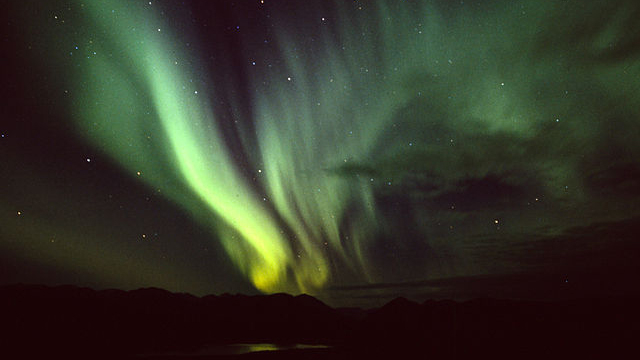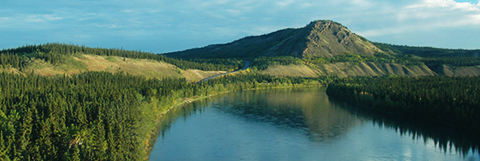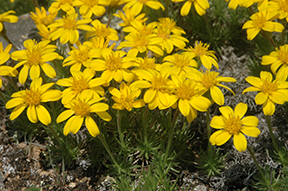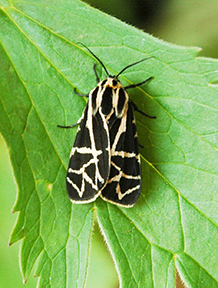BioBlitz at the Edge of Beringia

Blog by Stacey Lee Kerr, Biodiversity Storyteller / Creative Producer for the ROM's Centre for Biodiversity
There are strange things done in the midnight sun
By the men who moil for gold;
The Arctic trails have their secret tales
That would make your blood run cold;
- Excerpt from “The Cremation of Sam McGee” by Robert Service
Growing up in suburban Southern Ontario, I didn’t really have much of a touchstone to represent the idea of “wilderness” in my day-to-day life. I ran around in the woods near my home, but I could always see houses and their tidy backyards peeking through the edge of the treeline. I went to camp during the summer, but was still nestled within the rolling hills of Ontario farmland - decidedly neither very wild, nor particularly remote.
Fiction was where I first found wilderness. From under the covers at night by flashlight, I was led down snowy trails that wound through endless forests, pulled by dogsled through the pages of White Fang and Call of the Wild. Reading aloud the poetry of Robert Service with my classmates in a chant, almost being able to feel the creeping cold at the shores of Lake Laberge. Movies and tv shows (again, White Fang, of course, and Balto - yes, there was a dog theme) showed me the dancing waves of the aurora borealis over snowy mountain peaks. I was enthralled - one day, I would go North. I would see the Yukon with my own eyes, and experience wilderness in its truest sense.
Well, the day has come - I am headed to the Yukon this weekend for the Biological Survey of Canada’s BioBlitz in Carmacks, a village along the Klondike Highway about two hours north of Whitehorse.

Carmacks and its surroundings are the perfect location for a bioblitz. This might come as a bit of a surprise, given its proximity to the Arctic Circle. But there is more to Yukon biogeography than snow and ice and the boom and bust life cycles of Northern climates. The territory marks the edge of an ancient area of land called Beringia that stretched from Canada to Siberia, and was mostly free of glaciation during the Pleistocene. While most of the rest of Canada was covered in ice sheets, biodiversity flourished in the valleys and grassland steppes of Beringia, and animals dispersed across the continents of the Northern Hemisphere using land bridges that are now deep beneath the ocean. Some of the oldest human settlements in North America are found in the Yukon too, and its Indigenous communities have deep roots. This geological history free from the blank-slate scrapings of ice has resulted in conditions that have encouraged the evolution of plant and animal species that are found nowhere else in the world.


Now if I’m being honest, there’s another reason why Carmacks is a great spot for a bioblitz… and it’s because it’s not really that remote. The village is crisscrossed by two major highways, is situated along the Yukon River, and also has a couple mining roads that lead up into the Dawson Range Mountains. This infrastructure is what will allow our teams of scientists to access the wilderness and survey the varied habitats across the region, covering a lot more ground within the bioblitz time constraints.
But even though it’s not exactly isolated, Carmacks certainly still fits the concept of wilderness that set my imagination on fire as a child. The area is poorly-known scientifically, which means we might be in for some interesting discoveries this weekend even beyond the known unique species to the area. We probably won’t get to see the aurora, since we’ll be working with roughly 19 hours of daylight, but I’m pretty confident that we’ll pull some biological secrets out of those Arctic trails.
Want to follow along with the Carmacks BioBlitz? Check out our project on iNaturalist June 24-26 and take a look at all the species we find!
